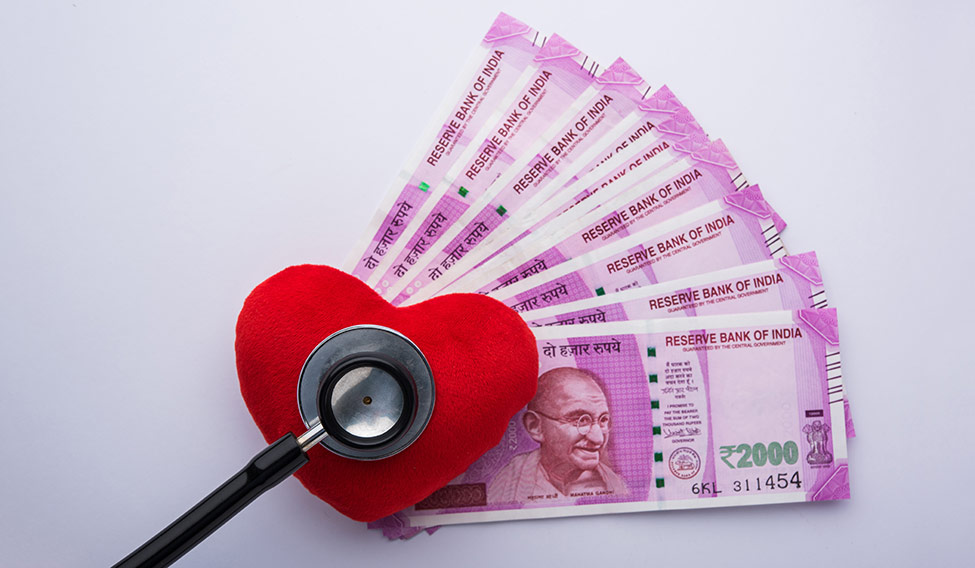On February 13, 30 million heart patients in India woke up to the good news that the government had slashed the price of cardiac stents by 85 per cent. The National Pharmaceutical Pricing Authority fixed the price of bare-metal stents (which do not have a coating) at Rs 7,260 and drug-eluting stents (which have a polymer coating over the mesh that releases a drug to prevent the blockage from recurring) at Rs 29,600, inclusive of local taxes and VAT. The new prices were applicable with immediate effect.
Three days after the NPPA's notification, Prime Minister Narendra Modi announced at an election rally in Uttar Pradesh that cardiac stents were finally affordable for everyone. The decision came as a blow to pharmaceutical companies and hospitals, who were asked to slash the prices of the existing stock of cardiac stents. Chaos ensued as patients were left confused over how much an angioplasty package would cost now. For a cardiac stent that costs Rs 25,000, hospitals were charging Rs 1.55 lakh, according to a survey conducted by Maharashtra Food and Drug Administration in 2015. The survey was conducted over a span of six months in major hospitals in Mumbai, Pune and Nashik. What it means is that a patient was paying some 600 per cent more than the actual cost of a cardiac stent.
Post the NPPA's announcement, a couple of top stent makers decided to withdraw some products from the market as it was unviable for them to sell at the reduced price. But the NPPA quickly intervened. It reminded the companies of the government order to maintain the production/ import/ supply of coronary stents, and to submit weekly reports on stents produced and distributed. Doctors and pharma companies are united in opposing the price cap because they say it would come in the way of innovations and restrict access to high-end stents approved by the US Food and Drug Administration. Dr Shirish Hiremath, president of the Cardiology Society of India, and cardiologist and director of Ruby Hall Clinic in Pune, says stent manufacturers want to withdraw the high-end stents as their profit margins would be hit. “As a cardiologist, I am unhappy with the government's move because we can’t use the latest stents, but we have no option but to face the situation,” he says. “Patients at large will benefit from the price cap as most of them struggle to pay their medical bills. However, for an Indian who is driving a car worth Rs 2 crore, he would want the best in the market, which would be unavailable.”
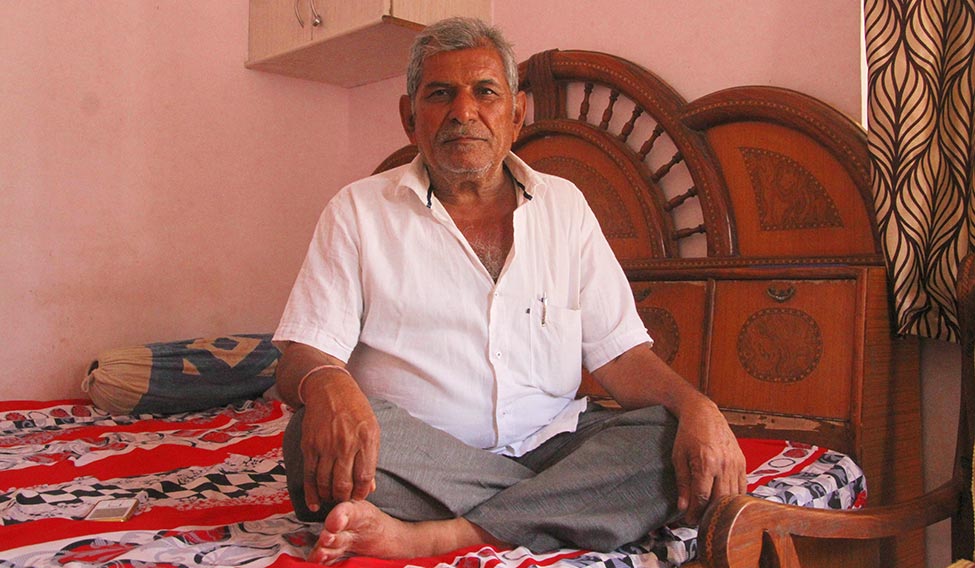 Unexpected returns: Om Prakash Mistry got a refund of Rs 70,800 after he underwent angioplasty at a private hospital in Ahmedabad | Janak Patel
Unexpected returns: Om Prakash Mistry got a refund of Rs 70,800 after he underwent angioplasty at a private hospital in Ahmedabad | Janak Patel
The NPPA, on the other hand, has maintained that the price cap would benefit hospitals and manufacturers, too, as they would be able to expand their market and reach out to more patients. “The biggest burden for the manufacturers before the price cap was sharing their profit margins, both on and off paper, with hospitals. Now that this obligation is over, they should change their supply chain model to continue making profits,” says Bhupendra Singh, director of NPPA. “In fact, from now on, most of them would directly supply the stents to the hospitals.”
 Bhupendra Singh
Bhupendra Singh
Before the price cap, distributors got the second largest profit margins of 125 per cent after hospitals that made a staggering 300 to 400 per cent profit. According to Singh, hospitals were exploiting the patients before the price cap, but stent manufacturers would not be affected by the notification as the NPPA has provisioned 8 per cent trade margin for them. The NPPA sent a note in February to the drug control officers and state chief secretaries to ensure that the price cap was being implemented by corporate hospitals, and their efforts bore fruit two months later.
Seventy-nine patients who underwent angioplasty surgery in 19 private hospitals in Gujarat between February 13 and 16 received a refund of Rs 51,56,138. It was made possible after the Gujarat FDA conducted a detailed investigation, and found out the number of stents used by each hospital and the money charged for it. “Despite the price cap, we were surprised to find some hospitals were charging anything between Rs 80,000 and Rs 1.5 lakh for drug-eluting stents,” says H.G. Koshia, commissioner, Gujarat FDA. “They were also reluctant to share the information with us, but they had to since cardiac stents are now in the National List of Essential Medicines. We had to threaten some hospitals with an FIR, following which we got access to every patient’s details, which included the date they were admitted for an angioplasty and discharged. It was unfair how poor patients who travelled long distances were being overcharged.”
One such patient, Om Prakash Mistry, 61, who underwent angioplasty at a private hospital in Ahmedabad on February 13, got a refund of Rs 70,800. “Since I had three blockages, three stents were put and my bill had gone up to Rs 2,60,000. I didn't have enough money so I borrowed from my friends and relatives,” says Mistry, who is a carpenter.
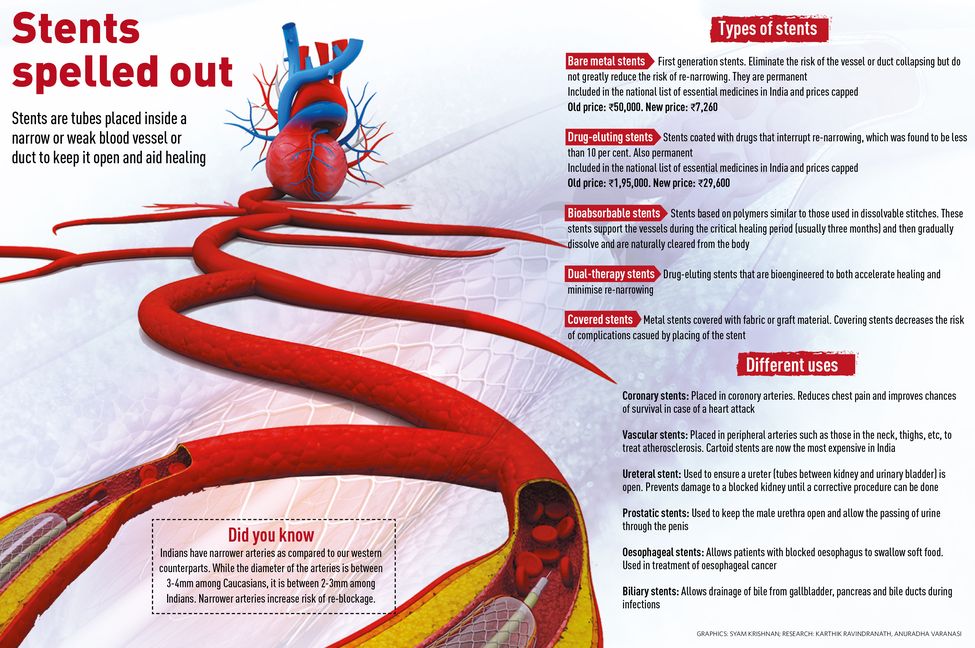
Another patient, Hanuman Mulchand, 45, paid Rs 2 lakh for the surgery. “We paid Rs 88,000 for the stent, which we felt was too high at the time. It was a relief to get a refund of Rs 57,400 from the hospital,” says Bheem Kothari, Mulchand's relative. “However, we are still unhappy about the fact that we were charged more than Rs 1 lakh for the angioplasty itself. It feels like the hospital has hiked the fees following the price cap.”
Officials from the FDA and the NPPA say they are aware that hospitals are increasing the cost of other medical devices, tests and services to make up for the loss. Singh says there is no specific law to regulate the rate of hospital procedures. When THE WEEK spoke to the insurance companies, the spokespersons confirmed that there were unnecessary inflations in the medical bills of angioplasty patients. Dr S. Prakash, senior executive director of Star Health Insurance, says that some hospitals are overcharging for medical equipment like the guide wire and balloon catheter that are used to access a blockage in the coronary artery. “The cost of stents have reasonably decreased since the price cap, but some hospitals are unhappy about this and are trying to charge patients more in other categories,” he says. “Usually, cardiologists use only one balloon, but after the price cap, we have observed that they have started using one balloon before dilatation and another one after.” He further said in some cases, cardiologists were reusing balloon catheters and charging patients around Rs 20,000 to Rs 25,000 to make steeper profits. According to the protocol, catheters should be disposed after it is used once.

Birender Sanghwan, an advocate and consumer activist, filed three petitions in the Delhi High Court in 2014 for cardiac stents to be added to the National List of Essential Medicines. “In 2014, a relative of mine was overcharged at a private hospital in Faridabad after he underwent angioplasty. I then filed several RTI applications and found out that patients were being overcharged for cardiac stents by 300 to 700 per cent,” he says. Sanghwan is sceptical about the price cap being of any help to the poor patients. “While the government has made the right decision, hospitals have hiked the rate of their angioplasty package,” he says.
Also, patients worry that they would be pressured by the doctors to undergo a bypass surgery or angioplasty, even if they don't need to, for the hospitals to maintain their profit margins. After the price cap, an angioplasty now costs anywhere from Rs 1.3 lakh to Rs 3.5 lakh depending on the type of room and hospital. On the other hand, a bypass surgery will cost Rs 3.5 lakh to Rs 12 lakh if the patient chooses an executive deluxe room. “In countries like the US and Japan, cardiologists and heart surgeons follow a strict protocol and well-defined criteria on whether a patient needs an angioplasty or bypass surgery, which is not done in India,” says Dr Arun Gadre, member of Alliance of Doctors for Ethical Healthcare that played an active role in seeking measures to check overcharging of drugs and services. “So, it is possible an increasing number of patients will undergo a bypass surgery. After speaking to many cardiologists, we have found that corporate hospital administrators are pressuring the cardiologists to increase the number of patients who should undergo invasive procedures following the price cap. Usually, only 15 per cent of OPD patients need an angioplasty or bypass surgery but their targets have now been increased to 40 per cent. This means, patients who don't need an angioplasty will also be told to undergo the procedure.”
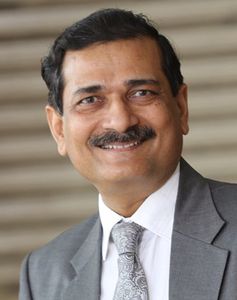 H.G. Koshia
H.G. Koshia
When 40-year-old Wasim Khan of Mumbai suffered a heart attack in March, he was admitted to SR Mehta Hospital. “An angiography was done and the doctors informed my relatives that I had five blockages and needed to undergo a bypass surgery immediately to survive,” he says. “My condition went from bad to worse overnight and I had to be shifted to the ICU. The entire time, my cardiologist and his team of doctors were pressuring us to take a decision immediately.” Speaking to THE WEEK, Wasim's relative Amin Khan says they suspected the doctors were putting unnecessary pressure on them to opt for a bypass surgery. “We decided to go for a second opinion,” says Amin. “We consulted two more cardiologists who advised us to go for angioplasty. We conveyed the same to Dr Sadanand Shetty, cardiologist at SR Mehta Hospital, but he insisted on a bypass surgery.” Wasim's family moved him to Cumballa Hill Hospital and Heart Institute, where he underwent angioplasty. Dr Saurabh Goel, an interventional cardiologist at the hospital, says: “We observed that one of his main arteries was blocked. The smaller arteries could be managed with medicines. He was suffering from breathlessness and was in no condition to undergo a bypass surgery. So, we decided to go ahead with angioplasty and inserted a stent to treat the blockage in the main artery. After six months, we will conduct another angioplasty to treat another blockage.” Wasim has resumed work in his shop in Kurla, Mumbai. Wasim says all heart patients should go for a second opinion about undergoing angioplasty or bypass surgery. “Following the price cap on cardiac stents, hospitals can no longer make huge profits from angioplasty. Why else would the doctors try to force a patient to undergo a bypass surgery?” asks Wasim.
Shetty denies the allegations and insists that angioplasty was not the right treatment for Wasim. “It was not a one-man decision. I have been in this field for 30 years and, in fact, I took the opinion of three other cardiologists and surgeons before suggesting a bypass surgery,” says Shetty. “There is obviously a lack of trust in patients.”
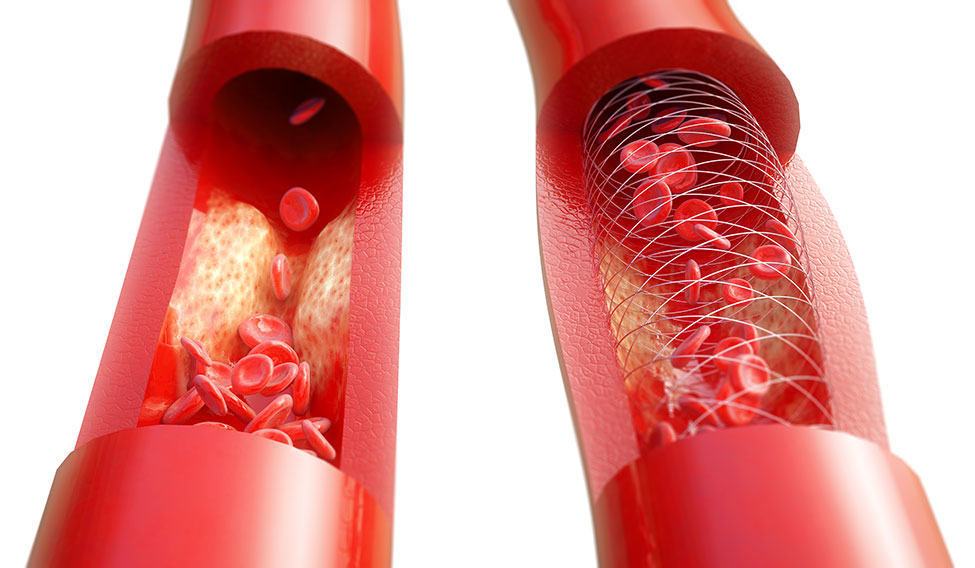
According to Dr T.S. Kler, director and head of department at Fortis Escorts Heart Institute in New Delhi, around 30 per cent of cardiac stenting performed in India are unnecessary. “Before the price cap, doctors were pushing patients to undergo an angioplasty. However, now they are pushing their patients to undergo bypass surgery instead to increase their profit margins,” says Amitava Guha, member of Federation of Medical Sales and Representatives. “Other than this, the procedural costs of an angioplasty have been increased by corporate hospitals to continue making profits despite the price cap on coronary stents.”
So, under normal circumstances, how does a doctor decide whether a patient needs an angioplasty or bypass surgery? Dr Ramakanta Panda, managing director and chief consultant for cardiovascular thoracic surgery at Asian Heart Institute in Mumbai, says it is purely a clinical decision based on multiple factors. “These factors include whether the patient is diabetic as such patients have a higher risk of re-blockage. We also look at the size of the artery with blockage, type of blockage and which artery is blocked,” he says. “However, we have observed that patients are inquiring and pushing for stenting procedures. The obvious reason for it is the price cap on cardiac stents. Today, the cost of stenting is half the cost of a bypass procedure. It is too early to say if there has been an increase in the number of bypass surgeries or for any definitive trends to emerge since the price cap.”
THERE ARE OTHER stents that are used to treat a wide range of ailments in different parts of the body. Most stents are made of either stainless steel, nickel, cobalt or chromium. The carotid stent is used to treat blockage in the carotid arteries that supply blood to the brain. The procedure usually costs around Rs 2 lakh and a single stent, which is imported from either the US or Europe, costs between Rs 35,000 and Rs 60,000. “Only 12 centres in India regularly perform carotid stenting and most of the patients are above age 60. It is a very complex procedure that takes three to five hours. While inserting a stent in the carotid artery, the brain functioning needs to be stopped for 10-12 minutes,” explains Dr R.C. Sreekumar, additional professor of vascular surgery at Sree Chitra Tirunal Institute for Medical Sciences and Technology in Thiruvananthapuram.
Though expensive, carotid stents are not that commonly used in India. Biliary stents, too, cost anywhere between Rs 45,000 and Rs 70,000, but they are more commonly used. “Biliary stents are usually imported from the US, the UK, Japan and Australia. While Indian companies are looking to manufacture it, the technology is very complex,” says Dr Vimal Someshwar, interventional radiologist at Kokilaben Dhirubai Ambani Hospital in Mumbai. “The stent is inserted under local anaesthesia. Some patients are sedated, too. The procedure takes 45 minutes to one hour. Cancer is the most common cause for undergoing biliary stenting.”
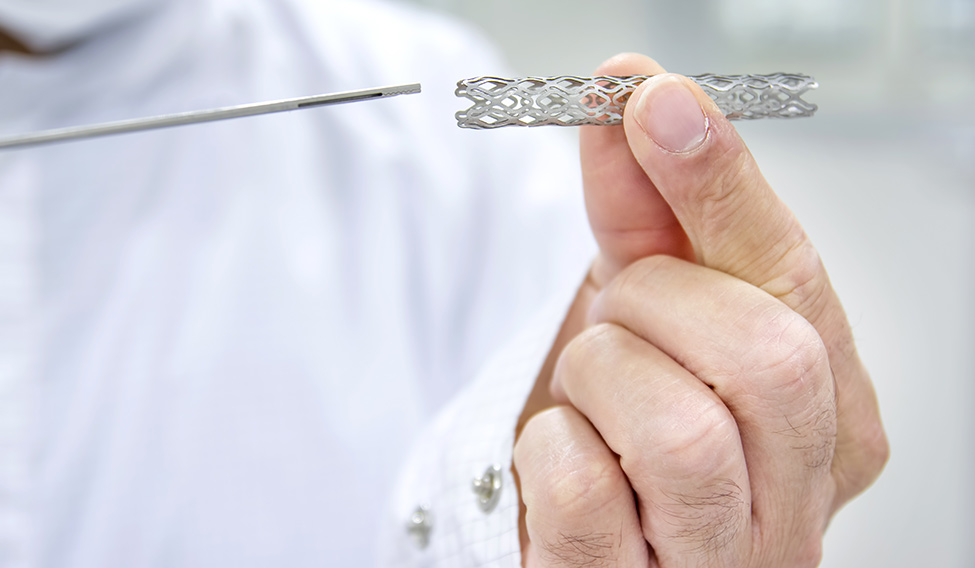
Patients who suffer from obstruction in the colon or large intestine undergo colonic stenting. The stent, made of metal, costs between Rs 40,000 and Rs 50,000.
The oesophagus stent, used to treat cancer and severe cases of acid reflux, costs around Rs 40,000 and is imported from Europe or the US. The Indian version costs just Rs 10,000, says Dr Ramesh Roop Rai, director and professor of gastroenterology at the National Institute of Medical Sciences and Research in Jaipur. According to a Bengaluru-based distributor, oesophagus stents are sold to hospitals in the price range of Rs 25,000 to Rs 55,000, depending on quality. The stents are mainly imported from Germany.
However, the cheapest stents available in India are ureteral stents comprising a thin tube that is inserted in the ureter for treating kidney stones, says Dr Pradeep Rao, consultant urologist at Global Hospital in Mumbai. It costs between Rs 150 and Rs 2,500. “A ureteral stent is inserted only temporarily for a period of two days to six weeks,” says Rao. “In patients with ureter cancer who are undergoing radiation it is kept for one year. In very rare cases where there is narrowing of the ureter, the stent is permanent.”
Dr G.S. Grewal, member of Alliance of Doctors for Ethical Healthcare, feels that the NPPA should bring a price cap for other stents, too. “While cardiac stents have been extensively reported about and a price cap has been decided by the NPPA, the government should also look into other kinds of stents,” he says. “We suspect patients are being overcharged for carotid stents and biliary stents. A price cap should be put on different types of stents by the NPPA.”




